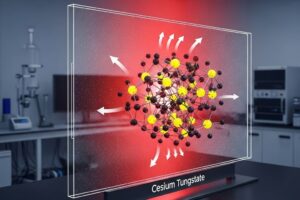Chain extenders and anti-hydrolysis agents both play crucial roles in polymer material manufacturing processes; yet each has distinct features and purposes. This article aims to outline the differences between these two important additives.
Chain Extender
- Definition and Function
- A chain extender can be defined as a substance used to increase the length of polymer chains. During polymer synthesis or modification processes, they play an essential role, for instance improving strength and toughness properties of materials by reacting with active groups on short polymers chains to create longer ones that link together more efficiently, improving mechanical properties as a result.
- Mechanism of Action
- Chain extenders typically react with terminal groups of polymer chains, such as hydroxyl or amino groups. The reaction may involve addition or condensation reactions. For example, epoxy chain extenders are widely used in recycled polyethylene terephthalate (rPET). The epoxy groups of the chain extender can react with the carboxyl or hydroxyl groups at the chain ends of rPET. This reaction not only increases the molecular weight of the polymer but also improves its melt strength and mechanical properties. As a result, the rPET modified with epoxy chain extenders can be used in more demanding applications, such as high-strength packaging materials and engineering plastics.
- Application Areas
- Chain extenders find extensive applications in the production of various polymer materials. In the manufacturing of rPET, the addition of chain extenders can optimize properties like melting index or intrinsic viscosity. They are also crucial in plastic production. In industrial manufacturing, such as film or filament, or biodegradable areas, chain extenders are used to enhance the performance and durability of polymer-based products.
Anti-Hydrolysis Agent
- Definition and Function
- An anti-hydrolysis agent is a substance that is employed to prevent or slow down the hydrolysis reaction of polymers in humid environments or in the presence of water. Hydrolysis can have detrimental effects on polymer properties, such as a decrease in strength and color change. Anti-hydrolysis agents play a key role in maintaining the stability of polymer materials by inhibiting these negative changes.
- Mechanism of Action
- The mechanism of action of anti-hydrolysis agents involves either forming a protective structure around the easily hydrolysis groups in the polymer (such as ester or amide groups) or reacting with water to consume it, thereby reducing the probability of hydrolysis. Polycarbodiimide, for example, is a commonly used anti-hydrolysis agent. In polyester monofilaments, polycarbodiimide reacts with the carboxyl groups generated during hydrolysis, forming stable structures and preventing further degradation of the polymer. In biodegradable polymers like PLA/PBAT blends, it helps to maintain the integrity and mechanical properties of the material during processing and use, especially in humid or aqueous environments.
- Application Areas
- Anti-hydrolysis agents are essential in polymer materials that are prone to hydrolysis, such as polyester fibers and polyamide engineering plastics. They are used in a wide range of products, including outdoor gear, electronic and electrical components, and packaging materials. In outdoor applications, they ensure that the polymer materials can withstand long-term exposure to moisture and maintain their performance and appearance.
Differences between Chain Extender and Anti-Hydrolysis Agent
- Differences in Chemical Properties
- Chain extenders usually have active functional groups that can react with polymer chains, while anti-hydrolysis agents mainly focus on the groups that interact with water or easily hydrolyzable groups. The chemical reactivity of chain extenders is directed towards chain growth reactions, whereas anti-hydrolysis agents are centered around inhibiting hydrolysis-related reactions.
- Differences in Functional Objectives
- The primary objective of chain extenders is to enhance the mechanical properties and molecular weight-related characteristics of polymers. In contrast, anti-hydrolysis agents aim to ensure the stability and durability of polymers in humid environments. For example, in a polyurethane system, using a chain extender will lead to an increase in strength and elasticity, while using an anti-hydrolysis agent will protect the material from degradation in a wet environment.
- Differences in Application Scenarios
- From the perspective of different polymer types and end uses of products, chain extenders are more emphasized in applications where mechanical properties need to be improved, such as high-performance sports equipment. Anti-hydrolysis agents are crucial in applications where the polymer is exposed to moisture for a long time, like outdoor plastic products.
Chain Extender Failure in High Temperature and High Humidity Environments
Chain extenders play a vital role in polymer modification, yet they encounter difficulties in high temperature and high humidity settings.
Failure Mechanisms
- Hydrolysis: In such environments, water molecules are highly active. The bonds formed by chain extenders, like ester or amide bonds in some polymers, are prone to hydrolysis. Water attacks these bonds, breaking the extended polymer chains and decreasing molecular weight.
- Thermal Degradation: Elevated temperatures provide excessive energy to the chemical bonds of chain extenders. This leads to bond rupture, generating free radicals. These radicals initiate chain reactions that further damage the polymer structure.
- Physical Factors: High humidity causes polymer swelling. The absorbed moisture may force chain extenders out of their active sites. Also, at high temperatures, phase separation can occur due to a loss of compatibility between the polymer and the chain extender.
Solution: Combining with Anti-Hydrolysis Agents
To address these problems, the use of anti-hydrolysis agents is effective. These agents can react with water or create protective structures around vulnerable bonds and sites. This safeguards the polymer chains and the bonds formed by the chain extender. As a result, the desired mechanical properties and stability of the polymer can be maintained even in harsh high temperature and high humidity conditions.
In conclusion, understanding the differences between chain extenders and anti-hydrolysis agents is of great significance in the research, development, production, and application of polymer materials. By properly differentiating and selecting these additives according to specific requirements, the performance of polymer materials can be optimized, and the quality of products can be enhanced.







